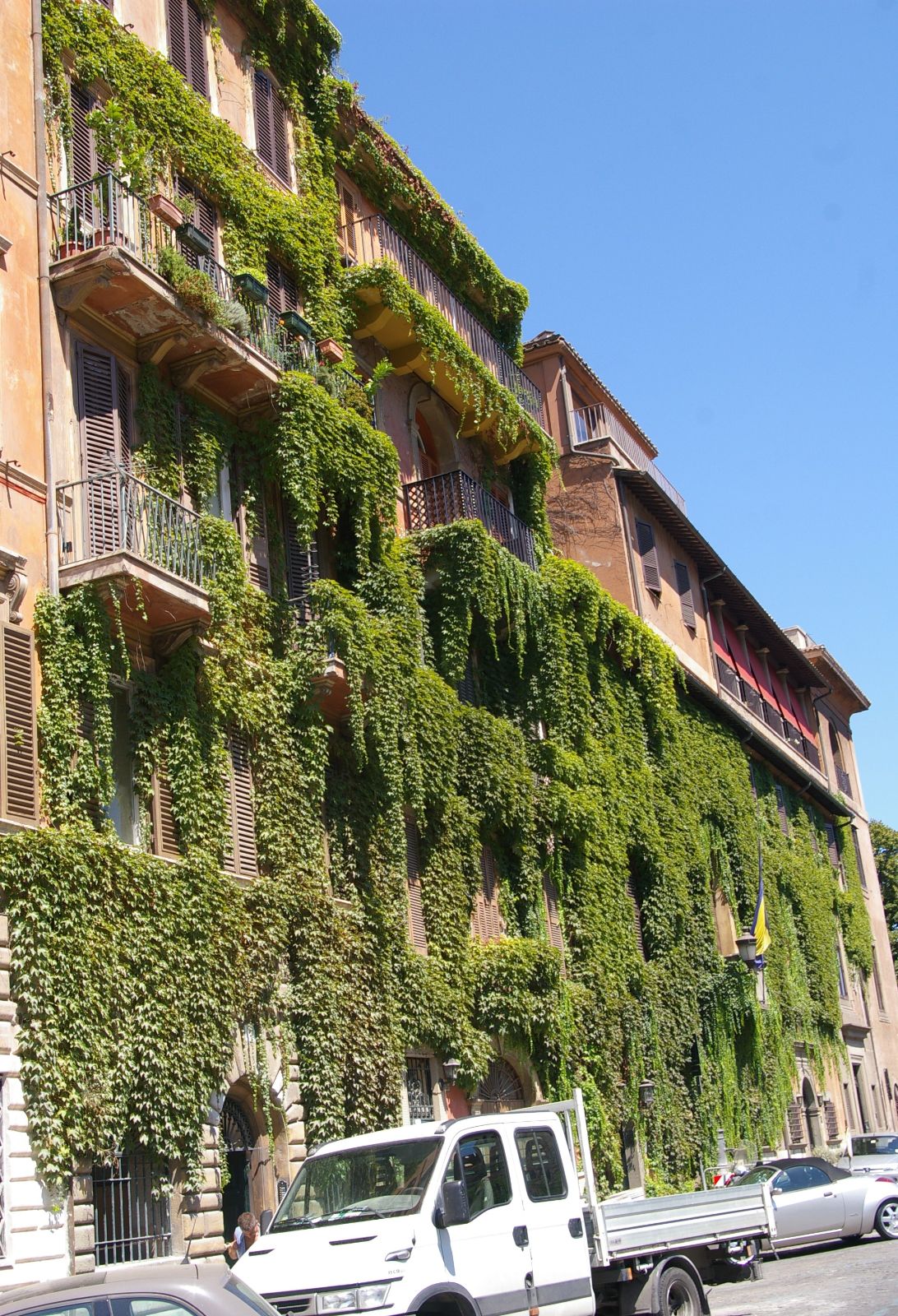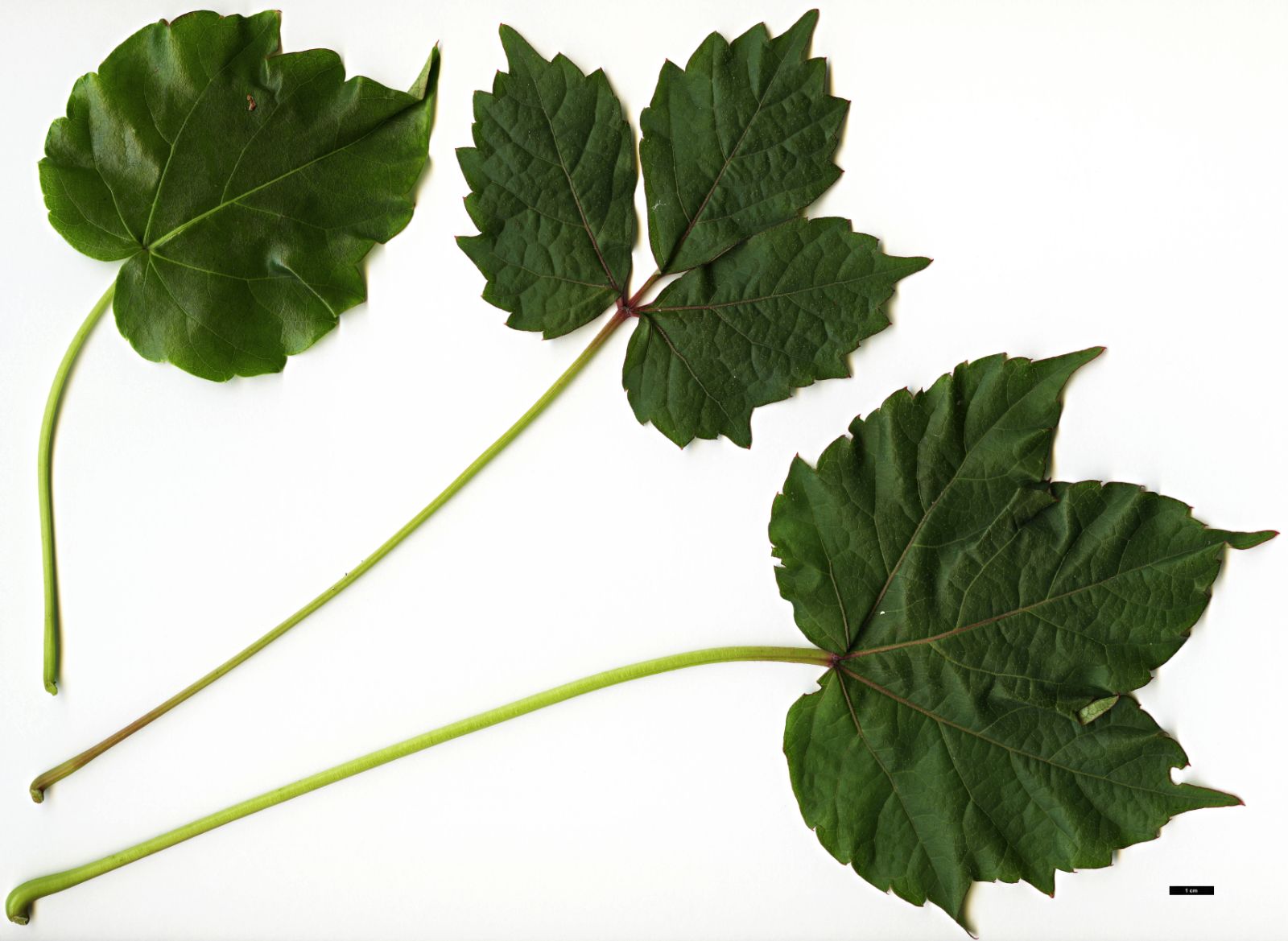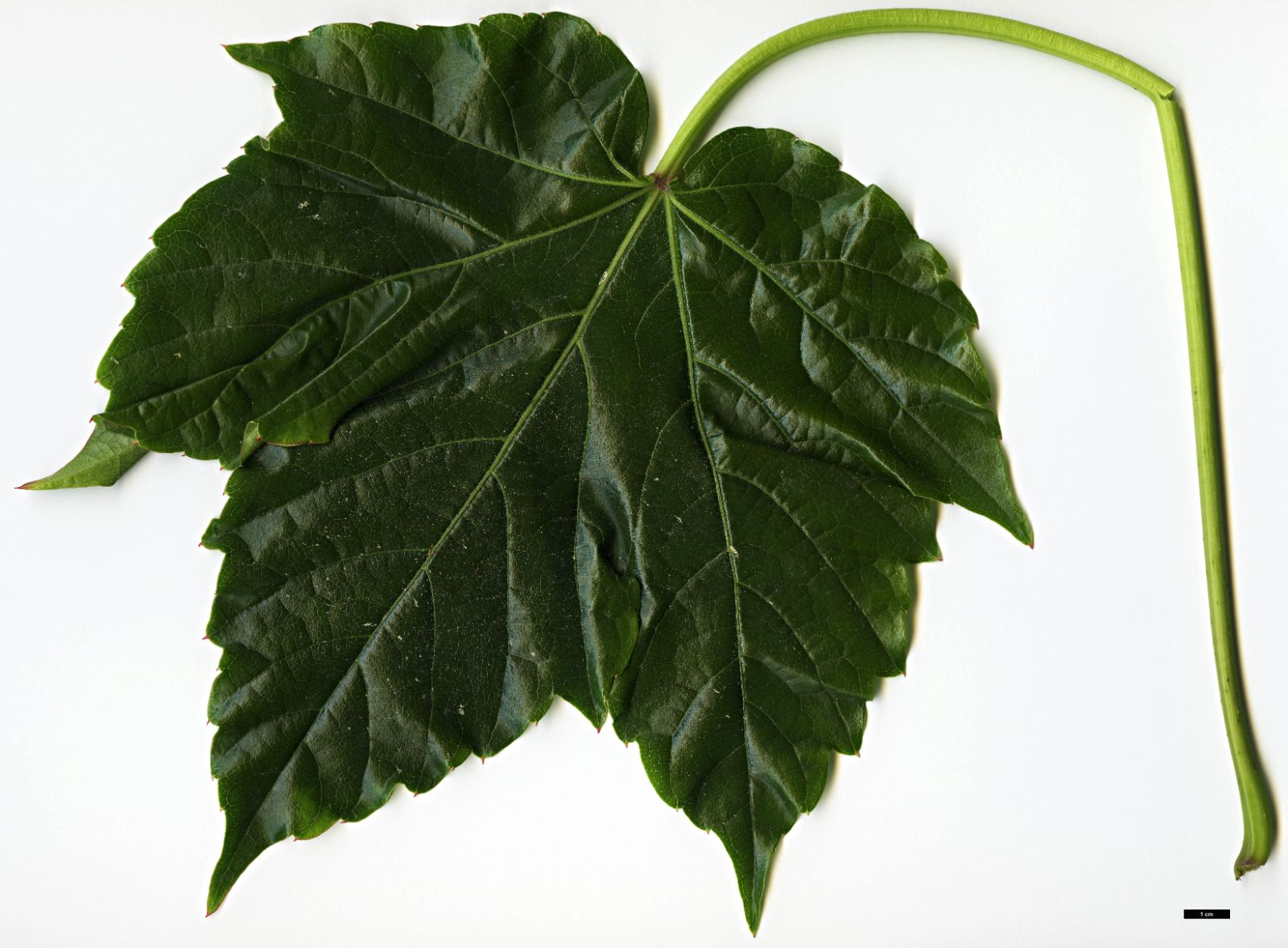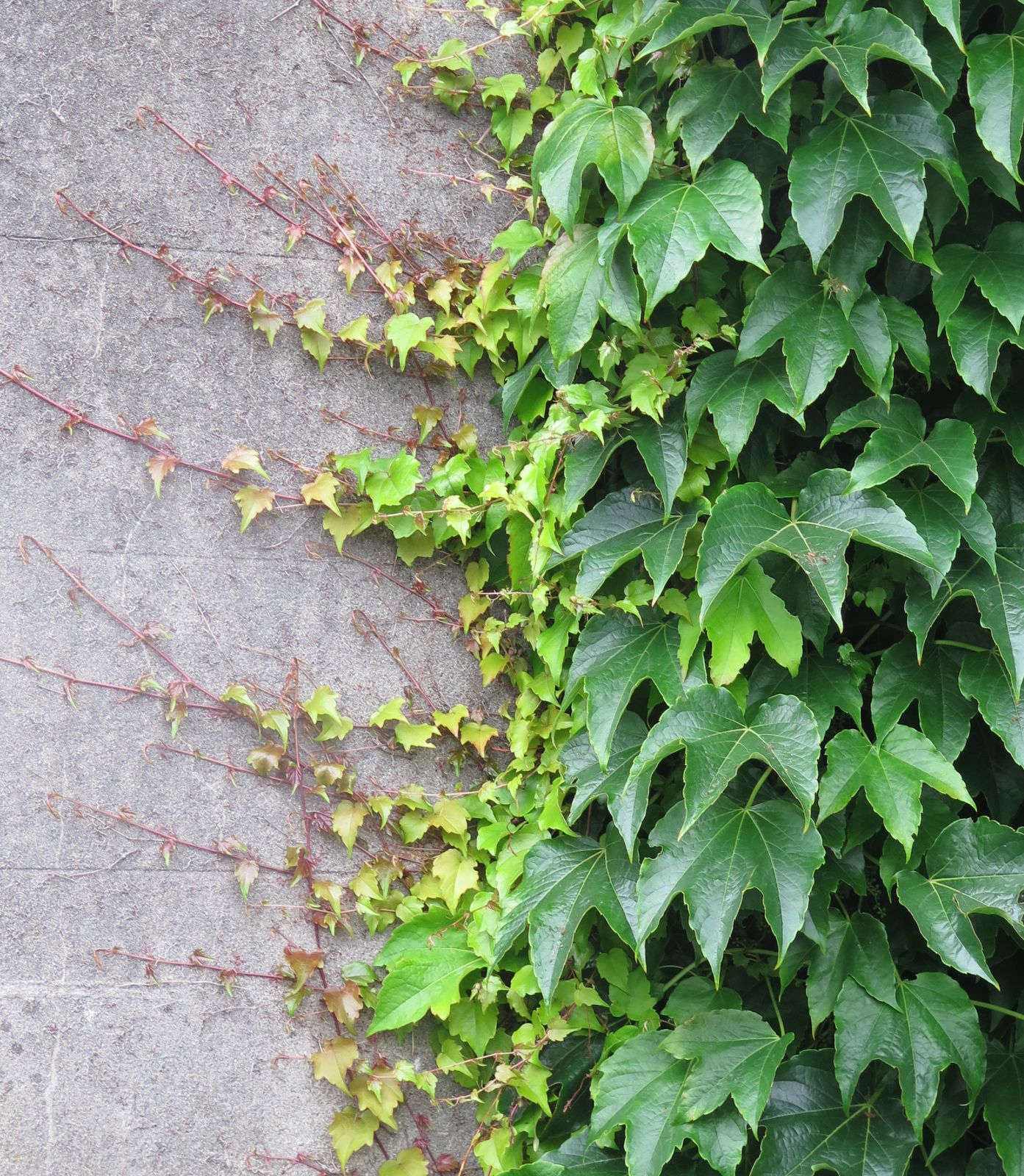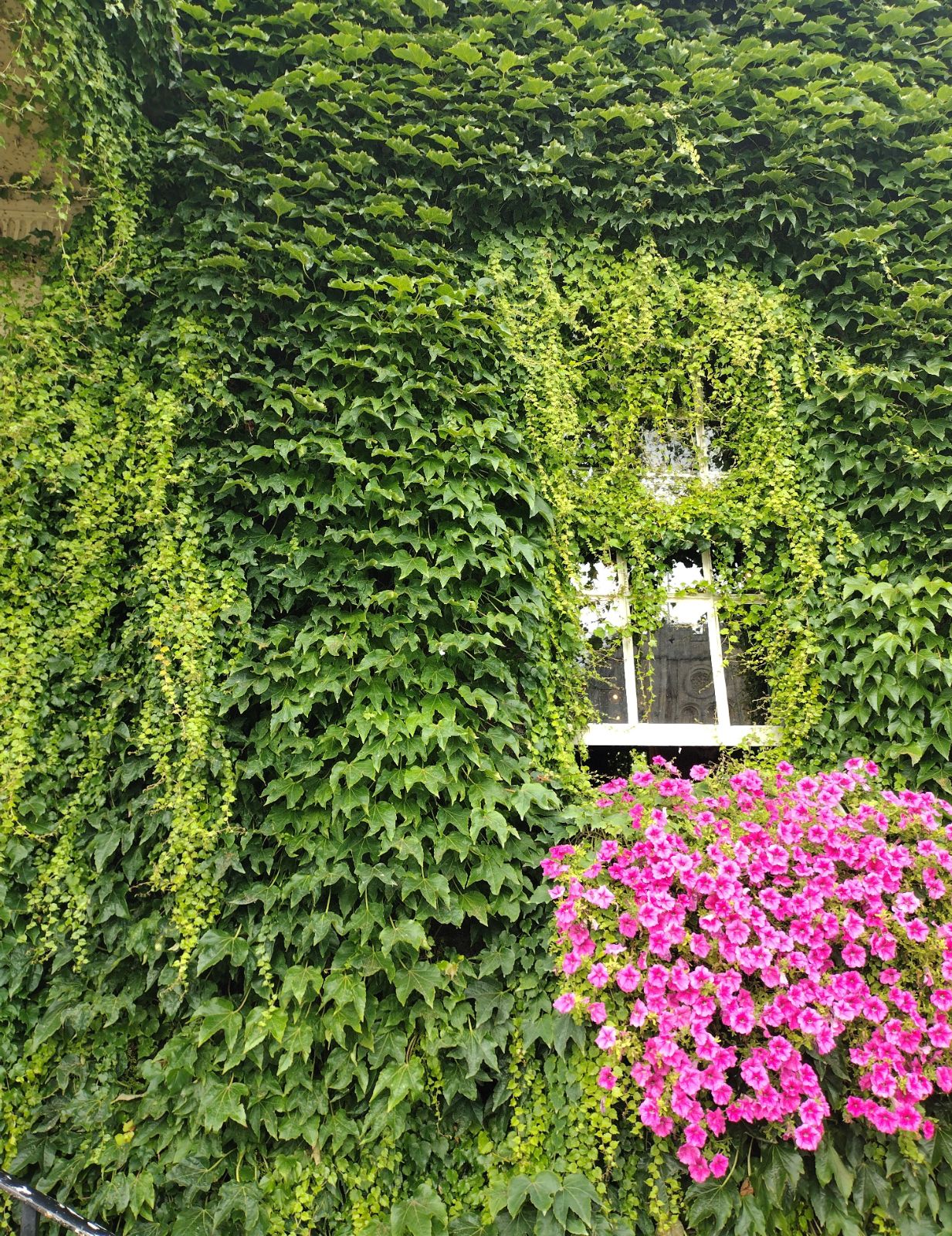Parthenocissus tricuspidata
Credits
Article from Bean's Trees and Shrubs Hardy in the British Isles
Recommended citation
'Parthenocissus tricuspidata' from the website Trees and Shrubs Online (treesandshrubsonline.
Genus
Common Names
- Japanese Creeper
- Boston Ivy
Synonyms
- Ampelopsis tricuspidata Sieb. & Zucc.
- Ampelopsis veitchii Hort.
- Parthenocissus tricuspidata f. veitchii (Carr.) Rehd.
- Cissus veitchii Carr.
- Vitis inconstans Miq.
- Psedera tricuspidata (Sieb. & Zucc.) Rehd.
Infraspecifics
A lofty deciduous climber reaching the tops of trees over 60 ft high; young shoots glabrous, attaching themselves to their supports by means of viscous disks terminating the tendrils. Leaves extremely variable, but of three main types: 1, broadly ovate with a heart-shaped base, shallowly or coarsely toothed, but not, or very slightly, lobed; 2, composed of three distinct, stalked leaflets, the middle one obovate, the side ones obliquely ovate; 3, conspicuously and deeply three-lobed, the side lobes erect or spreading. The two first types are characteristic of young plants and young shoots, and the leaves average from 2 to 5 in. across; the last are found on old plants that have reached the flowering and fruiting stage, and the leaves are large and coarse, 8 in. or even more across. In all forms they are glabrous above, finely downy on the veins beneath. Flowers yellow-green, produced in cymes mostly on short two-leaved shoots. Fruits dull, dark blue with a bloom, flattish, 1⁄4 in. to 1⁄3 in. wide. Bot. Mag., t. 8287.
Native of Japan and China; introduced by John Gould Veitch about 1862. No climbing plant ever introduced has secured so important a place in British horticulture. Owing to its abundance, it is now becoming the vogue to decry it. It certainly requires watching, and should never be allowed to grow over and shroud beautiful architectural detail. On the other hand, the stark ugliness of innumerable brick walls in urban districts has been hidden by it. It is really one of the least troublesome of climbers, being self-supporting and attaching itself readily and securely to walls, etc., by means of the viscid tips of the tendrils, and spreading with remarkable rapidity. The leaves of the young climbing branchlets are at first pressed to the wall. In autumn the foliage turns one of the loveliest of crimsons. The large leaves that appear on old plants near the base are coarse in appearance, and the plant then loses much of its charm. It does not bear fruit except during hot summers. Cuttings made of firm pieces of young branchlets, 3 or 4 in. long, and put in gentle heat about August strike root readily. The young plants should be grown in pots until planted out permanently, as they dislike transplanting.
P. tricuspidata (still better known in Britain as “Ampelopsis veitchii”), is very often, and quite wrongly, referred to as Virginia creeper. The explanation no doubt is that the true Virginia creeper from America (P. quinquefolia) was once very common as a wall-covering. But from the early 1870s the Japanese creeper gradually usurped its place on walls and at the same time took over its popular name. The two species are superficially similar, both being deciduous pad-climbers and both colouring in the autumn. But the Japanese creeper bears three kinds of leaf as described above; in the true Virginia creeper all the leaves are compound.
From the Supplement (Vol. V)
† cv. ‘Beverley Brook’. – Introduced by the late Rowland Jackman, this is less vigorous than the usual form (an obvious advantage in some situations), with smaller leaves colouring well in autumn. The original plant was found by Mr Jackman before the second world war growing on a house by the northern end of the Kingston Bypass, about a mile from the site of the former Coombe Wood nursery of Messrs Veitch (Geoffrey Bateman in Gard. Chron., May 5, 1972, p. 18). Beverley Brook flows under the road near the roundabout and then through Richmond Park and Roehampton golf course, reaching the Thames upstream of Putney bridge.
† cv. ‘Green Spring’. – At the opposite extreme from ‘Beverley Brook’, this has bright green, glossy leaves 6 to 8 or even 10 in. wide, reddish purple in autumn. Raised in France, named by W. van Lint of Boskoop in 1965 (Dendroflora, No. 18, p. 44).

